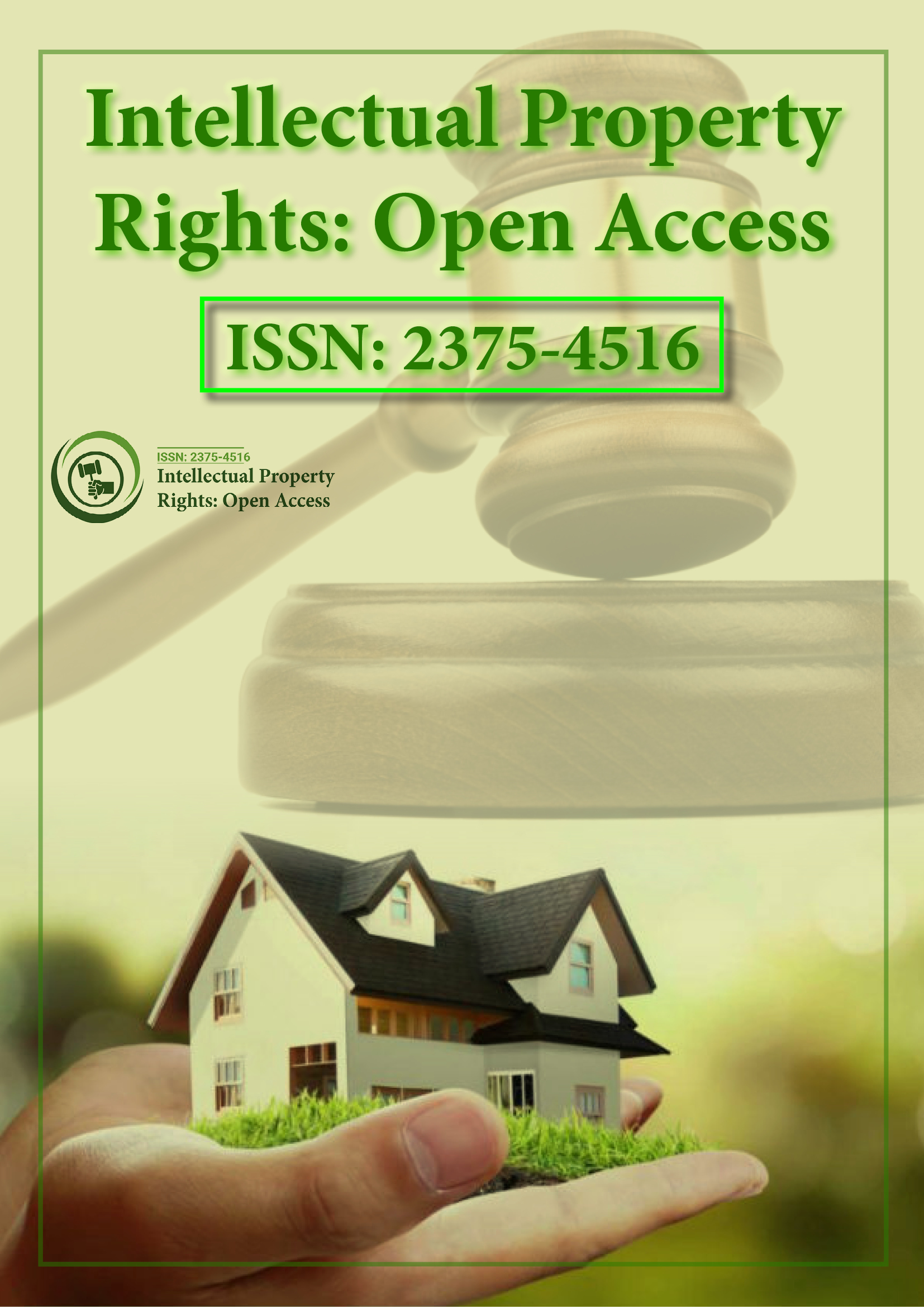Indexed In
- Open J Gate
- RefSeek
- Hamdard University
- EBSCO A-Z
- OCLC- WorldCat
- SWB online catalog
- Publons
Useful Links
Share This Page
Journal Flyer

Open Access Journals
- Agri and Aquaculture
- Biochemistry
- Bioinformatics & Systems Biology
- Business & Management
- Chemistry
- Clinical Sciences
- Engineering
- Food & Nutrition
- General Science
- Genetics & Molecular Biology
- Immunology & Microbiology
- Medical Sciences
- Neuroscience & Psychology
- Nursing & Health Care
- Pharmaceutical Sciences
Commentary - (2023) Volume 11, Issue 4
The Innovation and Role of Supplementary Protection Certificates in Intellectual Property
Taeshi Ikea*Received: 24-Nov-2023, Manuscript No. IPR-23-24064; Editor assigned: 27-Nov-2023, Pre QC No. IPR-23-24064 (PQ); Reviewed: 12-Dec-2023, QC No. IPR-23-24064; Revised: 19-Dec-2023, Manuscript No. IPR-23-24064 (R); Published: 26-Dec-2023, DOI: 10.35248/2375-4516.23.11.251
Description
Supplementary Protection Certificates (SPCs) constitute a significant aspect of intellectual property law, specifically in the scope of pharmaceuticals and agrochemicals. These certificates serve as extensions of patent rights, granting additional protection to patented products that undergo regulatory scrutiny before entering the market. SPCs aim to compensate for the time taken to obtain regulatory approvals, thereby incentivizing innovation in industries where extensive testing and regulatory processes delay product commercialization.
The primary purpose of SPCs is to offset the loss of effective patent protection resulting from the lengthy regulatory approval processes required for certain products, particularly pharmaceuticals. Once a patent for a medicinal or plant protection product expires, the SPC extends the exclusivity of the patent holder's rights, allowing them to recover the investment made in research and development during the period of regulatory review and testing.
The eligibility for SPCs is typically contingent upon meeting specific criteria, including obtaining a valid patent for a medicinal or plant protection product and receiving regulatory approval, such as marketing authorization, before the product's commercial launch. SPCs are generally limited to a maximum duration, often linked to the time taken for regulatory reviews or a fixed term from the patent's grant date, whichever is shorter.
The introduction of SPCs aimed to strike a balance between incentivizing innovation and ensuring access to essential medicines and agricultural innovations. By extending patent protection, SPCs encourage investment in research and development, fostering the discovery of new drugs, improved formulations, and innovative agricultural solutions that benefit society.
Moreover, SPCs contribute to the competitiveness of industries reliant on innovation by allowing patent holders to recover investments made in developing new products. This incentivizes continued investment in research and development, driving advancements in healthcare and agriculture while maintaining the profitability of the pharmaceutical and agrochemical sectors.
However, the implementation and regulation of SPCs have encountered various challenges and criticisms. One of the primary concerns relates to the complexity and inconsistency in SPC regulations across different jurisdictions. Variations in eligibility criteria, interpretation of laws, and differing approaches to SPCs' duration create complexities for patent holders seeking uniform protection across markets.
Furthermore, debates exist regarding the balance between promoting innovation and ensuring access to affordable medicines. Critics argue that SPCs may contribute to delayed market entry of generic or more affordable versions of essential drugs, impacting public health by restricting access to treatments due to extended exclusivity.
Efforts to address these challenges involve harmonizing SPC regulations, streamlining application procedures, and fostering transparency in granting SPCs. Collaborative initiatives between regulatory bodies, patent offices, and industry stakeholders aim to establish clearer and consistent guidelines, facilitating the efficient administration and enforcement of SPCs.
In recent years, discussions around SPCs have expanded beyond pharmaceuticals and agrochemicals to encompass other innovative industries, such as biotechnology and medical devices. This evolution raises questions about the applicability of SPCs to diverse sectors and the need for adaptable regulatory frameworks to accommodate evolving technological landscapes.
Conclusion
In conclusion, supplementary protection certificates play a pivotal role in incentivizing innovation in industries where regulatory approval processes significantly delay product commercialization. While serving as a mechanism to extend patent protection, SPCs contribute to continued investment in research and development, driving advancements in healthcare, agriculture, and other innovative sectors. Balancing the interests of patent holders, access to essential products, and fostering a conducive environment for innovation remains a complex and evolving challenge that requires ongoing collaboration and adaptation in intellectual property laws and regulations.
Citation: Ikea T (2023) The Innovation and Role of Supplementary Protection Certificates in Intellectual Property. Intel Prop Rights. 11:251.
Copyright: © 2023 Ikea T. This is an open access article distributed under the terms of the Creative Commons Attribution License, which permits unrestricted use, distribution, and reproduction in any medium, provided the original author and source are credited.
